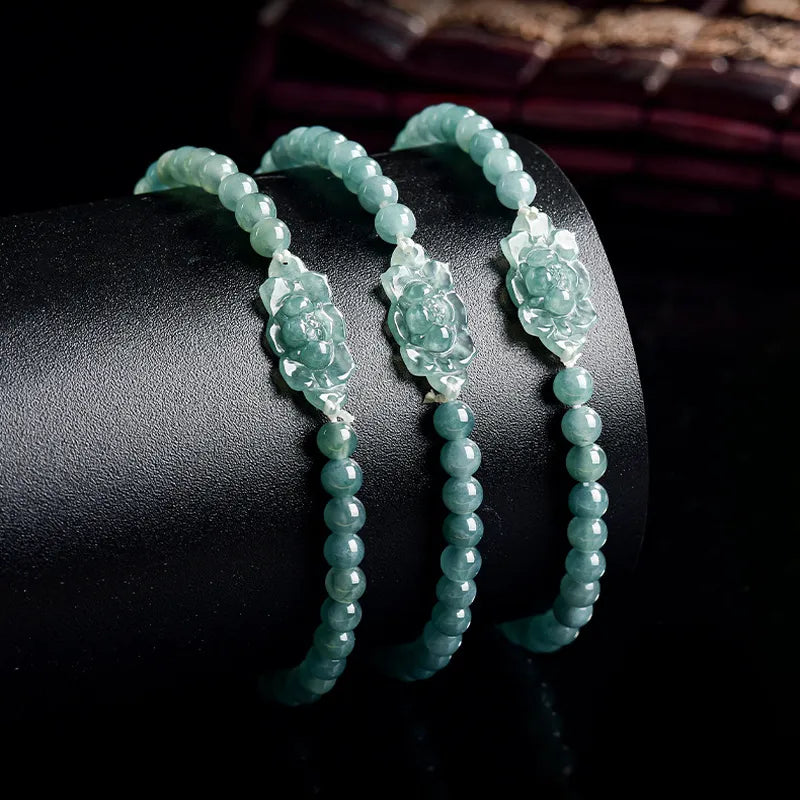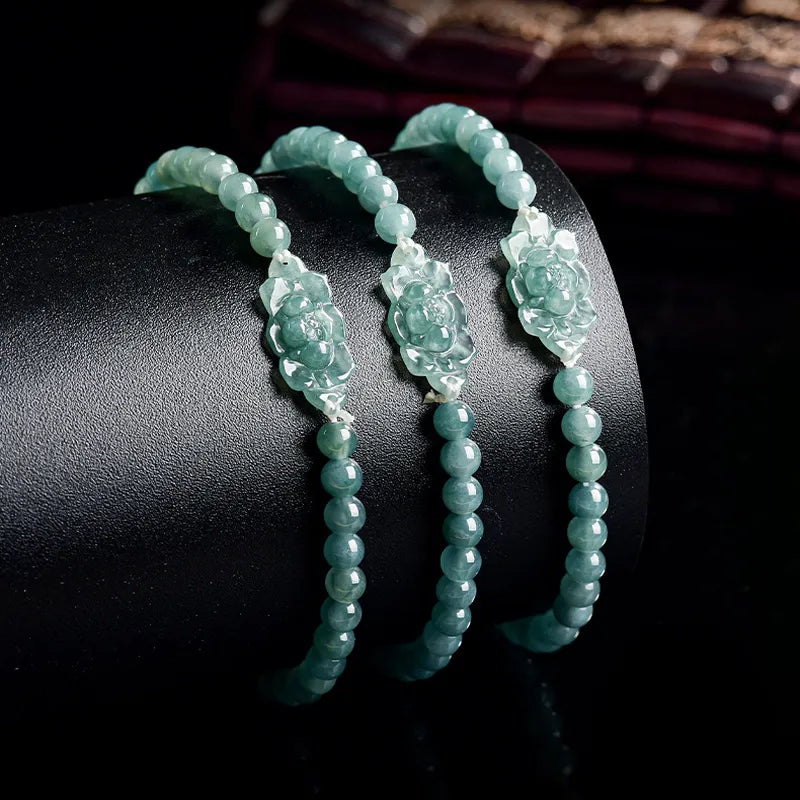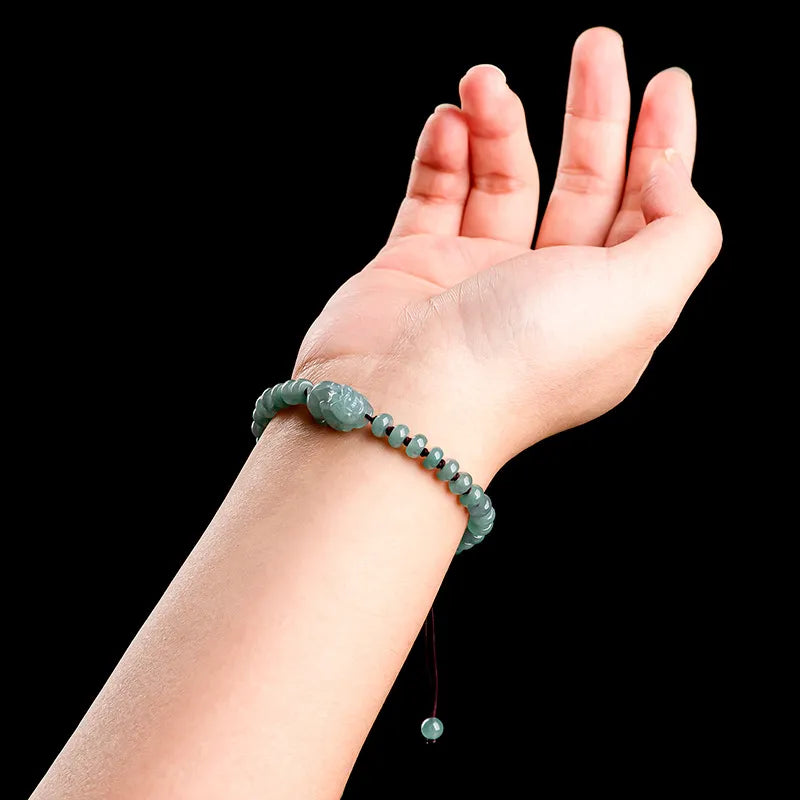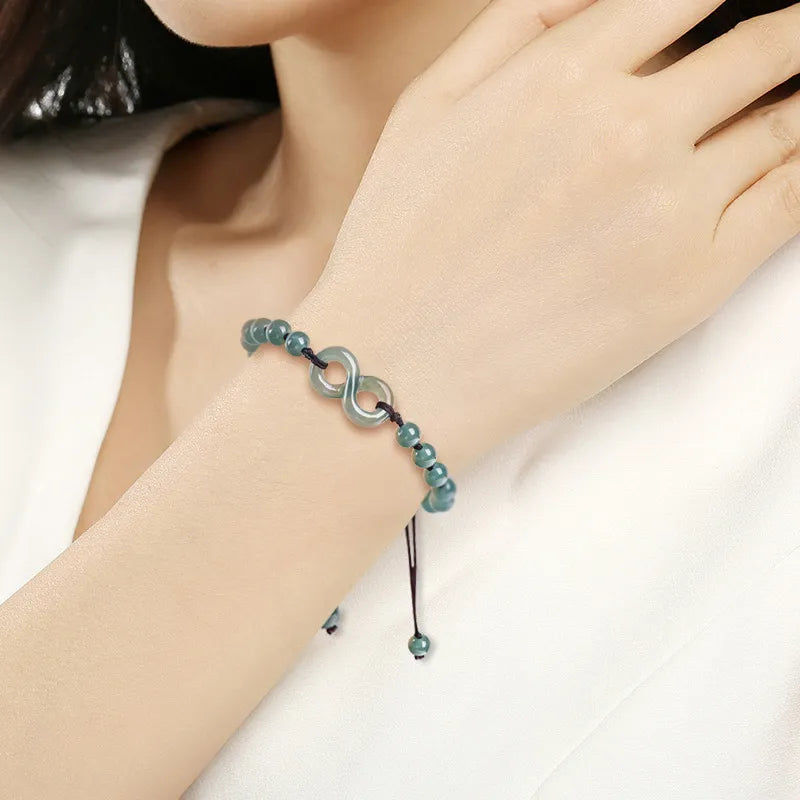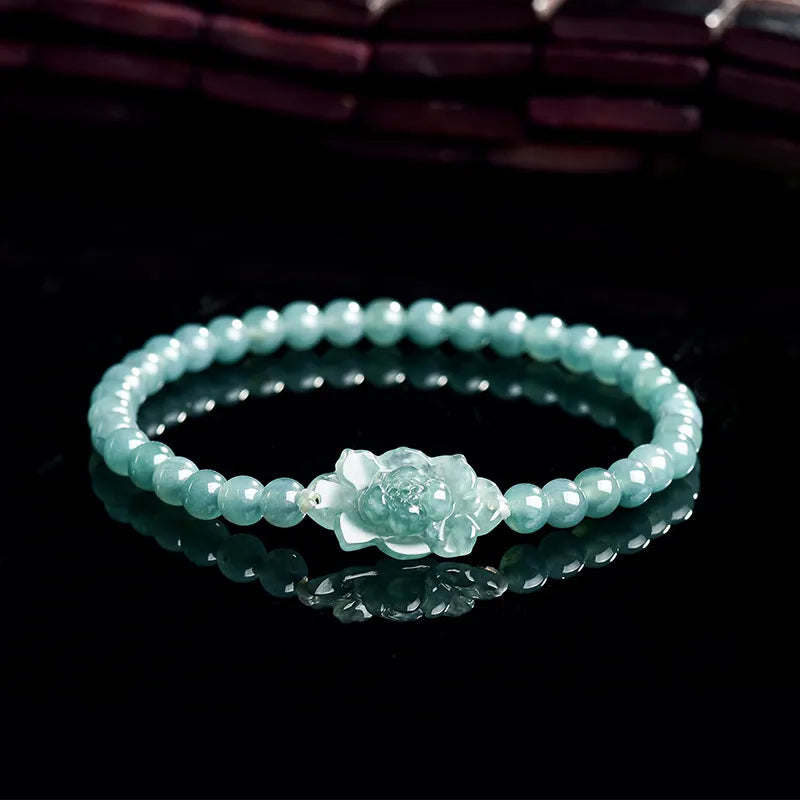How to Accurately Measure Jade Bangle Inner Diameter: A Step-by-Step Guide
Determining the correct inner diameter (also called "circle size" or "ring size") for a jade bangle ensures comfort and prevents the piece from slipping off or feeling overly tight. Follow these practical steps to measure your wrist accurately.

1. Preparing for Measurement
Before taking measurements, gather the right tools and create optimal conditions.
- Use a Flexible Tape Measure: A soft measuring tape (like those used for sewing) works best. If unavailable, a strip of paper or string and a ruler can substitute.
- Measure at Room Temperature: Extreme cold or heat can cause temporary swelling or shrinkage of the wrist. Aim for a neutral environment.
- Remove Accessories: Take off watches, bracelets, or other wristwear to avoid interference.
Pro Tip: If using paper or string, mark the overlap point with a pen before laying it flat against a ruler.
2. Locating the Correct Measurement Point
The bangle must slide over the hand’s widest part, which isn’t always the wrist.
- Identify the Hand’s Widest Area: For most people, this is the base of the thumb joint where it meets the palm.
- Position Your Hand: Place your palm flat on a table, fingers together, and thumb slightly abducted (spread outward). This mimics the posture used when putting on a bangle.
- Avoid Flexing: Tense muscles or clenched fists can distort measurements. Keep your hand relaxed.
Common Mistake: Measuring only the wrist circumference ignores the hand’s girth, leading to a bangle that won’t fit over the knuckles.
3. Taking the Circumference Measurement
Wrap the measuring tool around the identified widest point.
- Wrap the Tape Snugly: The tape should sit close to the skin without digging in. Imagine you’re testing how a bangle would slide on.
- Record the Measurement: Note the number where the tape overlaps. This is your hand’s circumference in millimeters or inches.
- Double-Check for Consistency: Repeat the process 2–3 times to ensure accuracy. Minor variations (1–2mm) are normal.
Alternative Method: If using string, wrap it around the hand, mark the overlap, and measure the marked length against a ruler.
4. Converting Circumference to Inner Diameter
Jade bangles are sized by their inner diameter, not circumference. Use this simple formula to convert:
- Formula: Inner Diameter (mm) = Circumference (mm) ÷ π (3.14).
- Example: If your hand measures 60mm in circumference, divide by 3.14 to get approximately 19.1mm. Round to the nearest whole number (e.g., 19mm or 20mm, depending on comfort preference).
- Add Tolerance: For a snug fit, add 1–2mm to the calculated diameter. For a looser fit, add 2–3mm.
Practical Adjustment: If math isn’t your strength, use an online circumference-to-diameter converter or refer to a sizing chart from a reputable gemology source.
5. Testing Fit with Household Items
Before purchasing, simulate the bangle’s fit using objects you already own.
- Find a Circular Object: A jar lid, coin, or hair tie can serve as a makeshift sizer.
- Compare Diameters: Measure the object’s diameter and compare it to your calculated size. The object should slide over your hand with gentle pressure but not require force.
- Assess Comfort: Wear the object for 5–10 minutes to gauge how it feels during movement.
Real-World Insight: Many jewelers offer printable sizing guides with circular templates. Print these at 100% scale and cut them out to test against your hand.
6. Accounting for Personal Preferences
Comfort thresholds vary based on lifestyle and sensitivity.
- Activity Level: If you type frequently or exercise, opt for a slightly looser fit to avoid constriction.
- Climate: In humid weather, skin may swell. A bangle with 0.5–1mm extra room can prevent discomfort.
- Layering: If you plan to stack multiple bangles, ensure each piece has enough space to move without clashing.
Expert Advice: When in doubt, size up. It’s easier to add a sizing bead (if the design allows) to reduce diameter than to stretch a too-tight bangle.
Final Considerations: When to Seek Professional Help
If self-measurement yields inconsistent results, visit a local jeweler or gemologist. Many offer free sizing services using calipers or mandrels for precise readings.
By following these steps, you’ll avoid the common pitfalls of ill-fitting bangles—whether they’re too loose to stay put or so tight they cut off circulation. A well-sized jade bangle should glide on effortlessly and rest comfortably against the skin, becoming a timeless addition to your jewelry collection.
